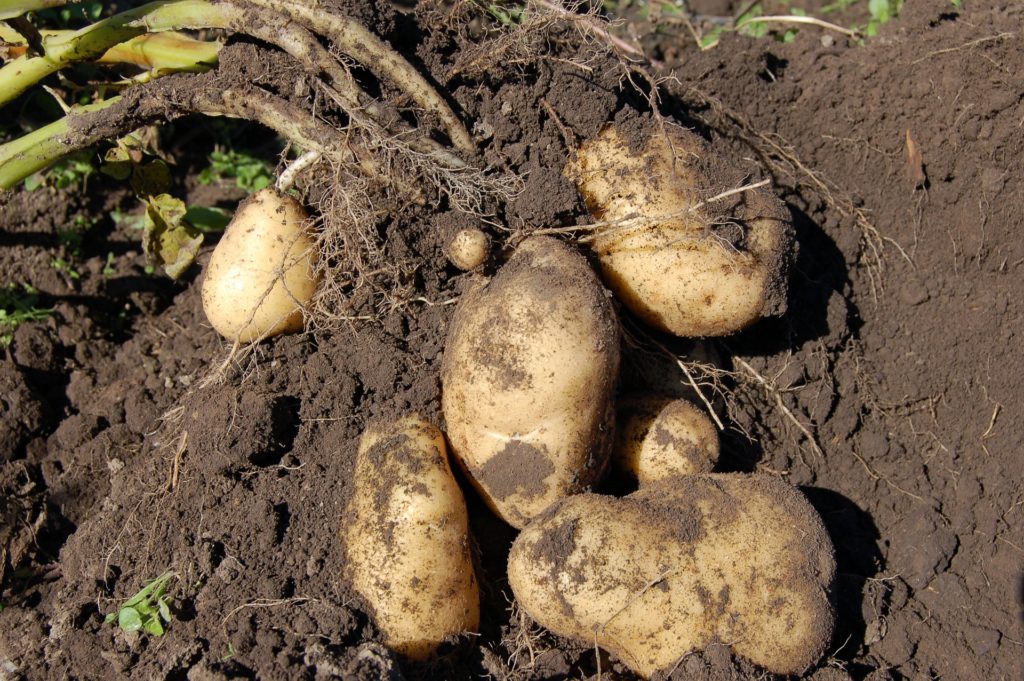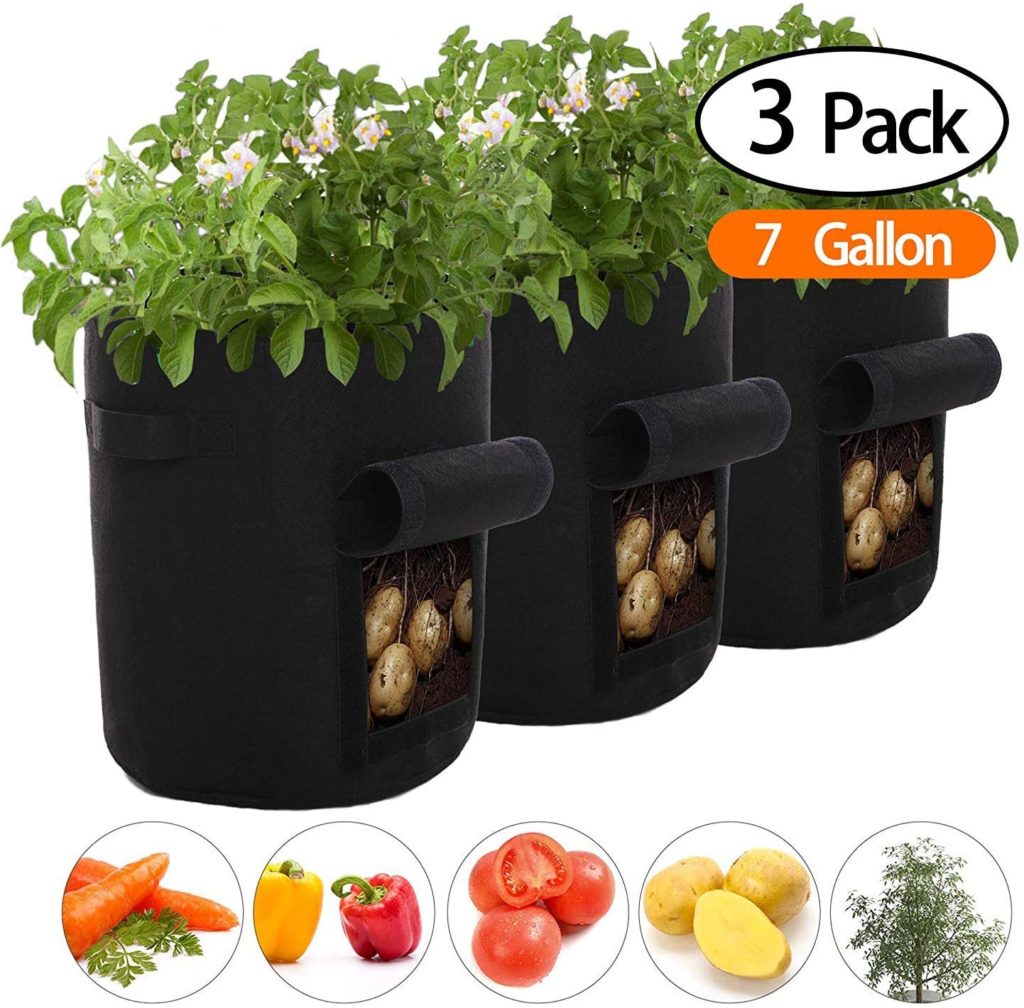This versatile vegetable is a staple food on most dinner plates. There are so many different types of potato, and ways to cook them, it’s no wonder we enjoy eating them so much. If you like chips, jacket potatoes, mash or roasted, or if you like them cold in salads, then it is worth the effort to grow a few plants in the garden.

Potato plants take up a quite a bit of space in a vegetable garden, but for smaller areas, they can also be grown in potato bags, barrels, or even old plastic dustbins that have had drainage holes drilled into the bottom.
Potatoes are either early, second early or maincrop types. With a bit of planning, you can keep yourself in potatoes throughout much of the year.
Early potatoes are quickest to mature, but give you less of a yield. They are harvested in early summer.
Second early potatoes are harvested from mid-summer.
Maincrop potatoes are ready from early autumn. These produce a larger spud, suitable for roasting, baking, and more.
Potato plants are grown from seed potatoes, which are small sized potatoes saved from the previous year’s crop.
Purchase your seed potatoes in winter, and set them in trays with the eye of the potato facing upwards. The eye is the small, round dent at one end of the potato, from which the shoots will sprout. Keep in a cool place. Approximately four weeks later, the potatoes will have sprouted, or ‘chitted’. Chitting potatoes before planting is recommended, as it produces a bigger yield.
Planting Potatoes
Potatoes grow well in an open position, and do less well in shade. The soil should be prepared a few weeks in advance by adding plenty of organic matter, such as garden compost or well-rotted manure.

The chitted potatoes should be planted four inches deep. Early varieties should be spaced approximately a foot apart, and two feet for maincrop varieties. The sprouting part should be on top. Cover with soil, and draw up more to form a small ridge along the row.
You can also use potato planters and bags to grow potatoes. These are convenient and easy to use.
Caring for Potatoes
Once the shoots begin to appear through the soil, cover over again, known as ‘earthing up’, making the ridge taller. As the plants grow, continue to earth up regularly. The growing potatoes with form in the ridge.
Keep potato plants well-watered in dry weather.
Harvesting and Storing Potatoes
The time to harvest potatoes will differ depending on the climate and planting position, but early varieties are usually ready approximately 12 weeks after planting. Carefully move some soil from the ridge to see how big the potatoes are. Harvest some that are of a god size to eat, and cover the rest back with soil to mature.
Maincrop varieties can take approximately 20 weeks to be ready for harvest. Lift them carefully with a fork. If you want potatoes that are good for storing, check the skin before lifting. If it comes off when you rub it, it is not yet ready. Only select undamaged potatoes for storage.
Store potatoes in a cool, dark place. A paper bag, mesh or hessian sack works well as it allows moisture to escape. Check through your stored spuds each month to make sure none are rotting. Potatoes can be stored for approximately three months, and still be good to eat.
